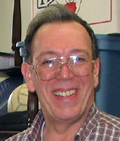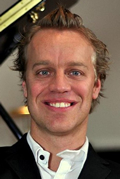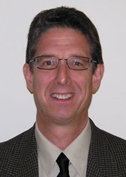Piano Technicians Guild
WESTPAC - Western and Pacific Regional Conference
March 7-10, 2013
Hyatt Regency Downtown, Phoenix, AZ
Rebuilding, Action Work, Modification, and Design Classes
NOTE: Click on an instructor's name to see a bio.
Action Geometry, Yet Another Look
A new class with a new look at how to examine and analyze the piano action. Along with some basic coverage of leverage relationships, this class will go on to discuss how to lay out and measure the three components and six levers of the key, whippen and shank. For example, should we measure on the diagonal, or on the horizontal, or is there yet another way? Here’s a clue: how would an engineer or physicist approach this machine we call a piano action?
Related topics of interest will include torque, inertia, and gearing principles as these tie in to our subject. Dr. Walter Pfeiffer, famous in our little world for his books on action investigations, will be cited where relevant to the discussion.
This new class will be presented through colorful PowerPoint and video and props and action models. If you wish to gain further insights into this fascinating subject, both theoretical and practical, you don’t want to miss this class!
Aspects of String Scale Design - Problems and Solutions
This class will explore several examples of String Scale Design anomalies or problems in common piano brands (old and new) familiar to most Piano Technicians. We will use the Pscale String Design software to rescale at least one example with supporting “before” and “after” audio/video “proofs” of the anomaly corrections. Additional examples will be presented using Pscale along with audio “proofs”. If time permits, we shall examine a number of additional string scale examples that demonstrate better and worse case scenarios from a more general perspective. This class will also prove valuable to “non-rebuilders” in a better understanding of “Tuning across the Tenor/Bass break”.
Grand Action Rebuilding
Kathy Smith, RPT & David Vanderlip, RPT
Rebuild a grand action, starting with thorough key frame work, including key bushing, polishing pins and capstans, backcheck work and much more. Then emphasizing efficiency, we cover parts prep, installation, alignment and regulation. Other great classes describe parts selection and geometry - this class takes it forward from there, for a quick, accurate way to get a stable action working at its best, with many slides of tools, jigs and techniques.
How to Install the New WNG Damper Action
While the WNG Damper Action is a vast improvement over the traditional American damper action the installation is approached differently. This class covers why the damper action is desirable, the tool kit WNG created to aid the installation of this damper action, selecting the features required for the piano you are working on, ordering, making a scale stick, drilling and tapping the rails, assembly and installation into the piano.
Recapping the Vertical Bass Bridge Without Removing the Plate
An easy way to replace split bridge caps on uprights without using epoxy or other glues to fix bridge pin problems. Learn how to build a jig over the plate to remove the old cap and glue the new one. This technique can also be applied to grand pianos. A DVD of this class is available.
Tools for Action Analysis
Anne Garee, RPT and Robert Marinelli, RPT
This two-period class gives technicians the opportunity to identify action imbalances using diagnostic tools. Class participants will work as teams using action models to find the action ratio using the Stanwood metrology table for advanced touchweight analysis. Strike weight, key ratio, balance weight, wippen weight, and front weight will be covered. A discussion of action remedies and appropriate replacement parts selections will conclude this hands-on class.
Note: Two periods; Limit 30 Participants – Pre-registration Required
The Touchrail: Precise Control of Grand Piano Touch Weight
The patented TOUCHRAIL - Precisely adjust grand piano touchweight in minutes with no cutting or drilling! With hundreds sold worldwide, the patented TOUCHRAIL TM from PitchLock Inc. offers an elegant solution for heavy or uneven touch weight in grand pianos. Designed for easy installation and adjustment, the TouchRail can reduce key downweight by as much as 10 grams with virtually no loss of low key repetition. Customer responses have been remarkably positive. And because our new TouchRail Technician Referral Service directs customer inquiries to experienced TouchRail installers, this is not just a class, it’s a new career opportunity not to be missed!
The Art & Science of Piano Design
This class provides an overview of the design changes that are being made to Young Chang/Weber pianos. These changes affect the entire product line and are quite extensive. They include many of the concepts and features that have been introduced over the past several decades in Fandrich's classes and seminars on the redesign and remanufacturing. Many of these concepts can be applied to contemporary piano rebuilding. Along with technical details about the specific design changes being made, the presentation includes a discussion of the overall philosophy behind them.
 Nick
Gravagne has been a prolific writer for the Piano Technicians Journal, as well
as a frequent teacher at P.T.G. National and State Conventions, and many regional
seminars and technicals nationwide. A technician since 1973, and an RPT since
1975, much of Nick's business currently revolves around rebuilding and soundboard
manufacture for the trade, and is active in concert prep and maintenance of
fine grand pianos. Nick has also served as the Technical Service Manager for
Kawai America Pianos. His credentials and awards include a BA from William
Paterson University, an AST in Mechanical Engineering, and the PTG Member of
Note Award. Nick most recently received the Hall of Fame Award at the Annual
Convention in Seattle.
Nick
Gravagne has been a prolific writer for the Piano Technicians Journal, as well
as a frequent teacher at P.T.G. National and State Conventions, and many regional
seminars and technicals nationwide. A technician since 1973, and an RPT since
1975, much of Nick's business currently revolves around rebuilding and soundboard
manufacture for the trade, and is active in concert prep and maintenance of
fine grand pianos. Nick has also served as the Technical Service Manager for
Kawai America Pianos. His credentials and awards include a BA from William
Paterson University, an AST in Mechanical Engineering, and the PTG Member of
Note Award. Nick most recently received the Hall of Fame Award at the Annual
Convention in Seattle. Tremaine
Parsons, RPT, was introduced to Piano Technology in 1969 when his piano technician
(after a fourth call back) taught him to re-glue upright jack posts using two
kitchen knives and a piece of coat hanger to clear the mortise. Seeking higher
standards, Tremaine attended North Bennet St. School of Piano Technology for
one year graduating in 1974. While building a successful tuning, repair, and
rebuilding business in the suburbs of Boston MA, Tremaine became interested
in computers during the mid-80’s and released his first version of Pscale (piano
scaling program) three months after seeing a demonstration of the Atari scaling
program at a chapter meeting held at Inventronics in 1989.
In 1992, Tremaine relocated to California and, while building a new tuning
clientele during this decade, established Sierra Software Services, ported
Pscale to the Windows platform, developed the Ptools Client Management program,
and was recruited to create numerous web sites for small businesses in his
area.
In 2001, Tremaine established an Internet Service Provider company offering
low cost Internet access and Web Hosting Services. To date, Tremaine has and
continued his avocations in Piano and Computer Technologies.
Tremaine
Parsons, RPT, was introduced to Piano Technology in 1969 when his piano technician
(after a fourth call back) taught him to re-glue upright jack posts using two
kitchen knives and a piece of coat hanger to clear the mortise. Seeking higher
standards, Tremaine attended North Bennet St. School of Piano Technology for
one year graduating in 1974. While building a successful tuning, repair, and
rebuilding business in the suburbs of Boston MA, Tremaine became interested
in computers during the mid-80’s and released his first version of Pscale (piano
scaling program) three months after seeing a demonstration of the Atari scaling
program at a chapter meeting held at Inventronics in 1989.
In 1992, Tremaine relocated to California and, while building a new tuning
clientele during this decade, established Sierra Software Services, ported
Pscale to the Windows platform, developed the Ptools Client Management program,
and was recruited to create numerous web sites for small businesses in his
area.
In 2001, Tremaine established an Internet Service Provider company offering
low cost Internet access and Web Hosting Services. To date, Tremaine has and
continued his avocations in Piano and Computer Technologies. David
Vanderlip and Kathy Smith are a husband-and-wife team with a varied business
in Southern California. They have both been in the piano tech business for
over 30 years. They work with schools, concert halls and private clients, and
have a small rebuilding shop at their home in Anaheim. They are both active
with the local exam board, giving tuning and technical exams to six chapters.
They have both been teaching, together and separately, at local chapter meetings
and regional and national conventions, for 20 years.
David
Vanderlip and Kathy Smith are a husband-and-wife team with a varied business
in Southern California. They have both been in the piano tech business for
over 30 years. They work with schools, concert halls and private clients, and
have a small rebuilding shop at their home in Anaheim. They are both active
with the local exam board, giving tuning and technical exams to six chapters.
They have both been teaching, together and separately, at local chapter meetings
and regional and national conventions, for 20 years. Lead
design engineer for Wessell, Nickel & Gross and Mason & Hamlin. Involved
with piano making and design for the last 30 years.
Lead
design engineer for Wessell, Nickel & Gross and Mason & Hamlin. Involved
with piano making and design for the last 30 years. Christian
Bolduc is a technician specialized in soundboards and pinblocks (belly man).
Christian is a cabinet and furniture expert. He studied cabinet making at
the Ecole du Meuble de Victoriaville and spent one year at the Schimmel factory
in Braunschweig, Germany studying piano structure and design. He is a constant
searcher for new ideas and methods to make your rebuilding projects easier.
Christian is the factory manager at Pianos Bolduc.
Christian
Bolduc is a technician specialized in soundboards and pinblocks (belly man).
Christian is a cabinet and furniture expert. He studied cabinet making at
the Ecole du Meuble de Victoriaville and spent one year at the Schimmel factory
in Braunschweig, Germany studying piano structure and design. He is a constant
searcher for new ideas and methods to make your rebuilding projects easier.
Christian is the factory manager at Pianos Bolduc. Robert
Marinelli, founder and president of Pianotek Supply Company, has been a Registered
Piano Technician since 1976. He studied piano at Wayne State University with
Boris Maximovich before beginning his technical career. One of the most unique
opportunities in his early technical training was working in a furniture repair
shop for Henry Ford’s personal cabinetmaker. His work as a concert technician
over the years has included the Detroit Symphony Orchestra and the C&A
department of the Hammell Music Steinway dealership. He owned and operated
a piano rebuilding and refinishing shop in Detroit while running his own piano
tuning business. At Pianotek, Bob is involved with new product development,
the manufacturing of replacement keyboards, and action restoration. He is an
active clinician at international and regional conferences as well as at schools
in the U.S. and abroad.
Robert
Marinelli, founder and president of Pianotek Supply Company, has been a Registered
Piano Technician since 1976. He studied piano at Wayne State University with
Boris Maximovich before beginning his technical career. One of the most unique
opportunities in his early technical training was working in a furniture repair
shop for Henry Ford’s personal cabinetmaker. His work as a concert technician
over the years has included the Detroit Symphony Orchestra and the C&A
department of the Hammell Music Steinway dealership. He owned and operated
a piano rebuilding and refinishing shop in Detroit while running his own piano
tuning business. At Pianotek, Bob is involved with new product development,
the manufacturing of replacement keyboards, and action restoration. He is an
active clinician at international and regional conferences as well as at schools
in the U.S. and abroad. Anne
Garee, Program Director for Piano Technology, has enjoyed her career as piano
technician at the Florida State University College of Music since 1983. She
joined the faculty in 2004 and directs the Master of Arts in Piano Technology
program mentoring trained piano technicians in one of the most comprehensive
colleges of music in the nation She holds a Bachelor of Music degree
in Piano Performance and completed a three year apprenticeship program for
the Certificate in Piano Technology from the Bowling Green State University
in Ohio. A Registered Piano Technician with the Piano Technicians Guild, she
is an active clinician both in the U.S. and abroad.
Anne
Garee, Program Director for Piano Technology, has enjoyed her career as piano
technician at the Florida State University College of Music since 1983. She
joined the faculty in 2004 and directs the Master of Arts in Piano Technology
program mentoring trained piano technicians in one of the most comprehensive
colleges of music in the nation She holds a Bachelor of Music degree
in Piano Performance and completed a three year apprenticeship program for
the Certificate in Piano Technology from the Bowling Green State University
in Ohio. A Registered Piano Technician with the Piano Technicians Guild, she
is an active clinician both in the U.S. and abroad. Scott
Jones began his career as a piano technician in 1984, after receiving a BM
degree in music composition from the University of North Carolina, Chapel Hill.
From 1989 to 2001, he was employed by Steinway & Sons, New York, where
he held positions as concert technician, technical seminar instructor and product
development technician. From 2001 to present, he developed the PitchLock string
coupler and TouchRail systems. Scott has authored 6 U.S. patents in the field
of Piano Technology, most recently receiving a patent for the TouchRail concept.
Scott
Jones began his career as a piano technician in 1984, after receiving a BM
degree in music composition from the University of North Carolina, Chapel Hill.
From 1989 to 2001, he was employed by Steinway & Sons, New York, where
he held positions as concert technician, technical seminar instructor and product
development technician. From 2001 to present, he developed the PitchLock string
coupler and TouchRail systems. Scott has authored 6 U.S. patents in the field
of Piano Technology, most recently receiving a patent for the TouchRail concept.